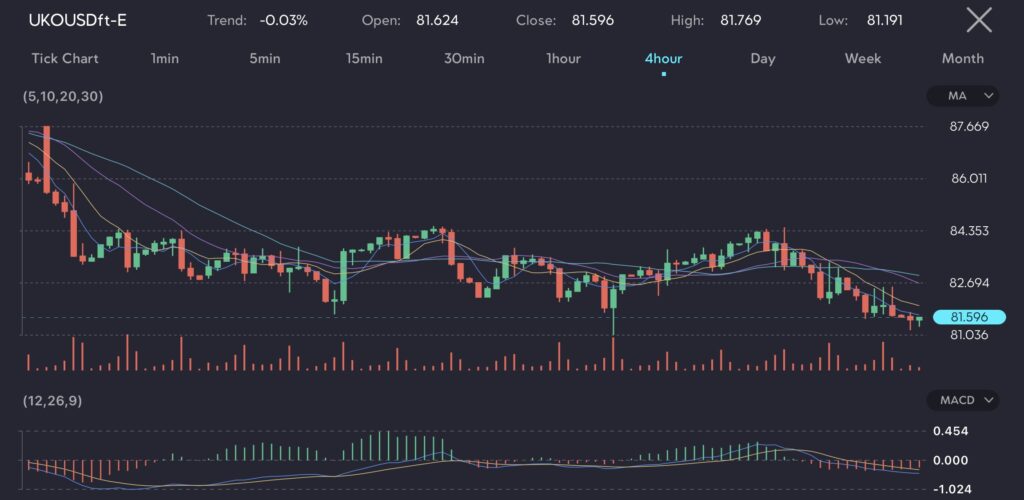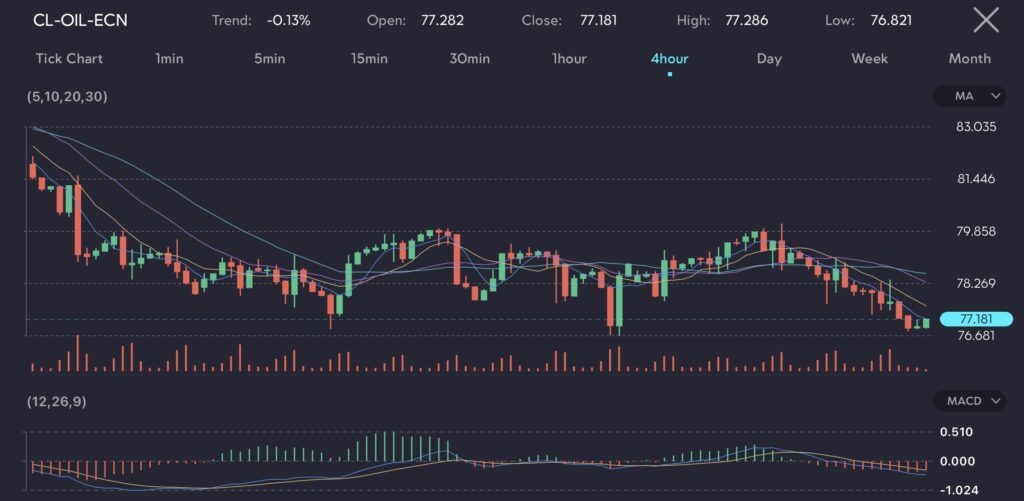Key Points:
- Brent crude futures continued to fall to $81 per barrel, and WTI crude futures dropped to $76 per barrel.
- The FOMC meeting minutes indicated the potential for further rate hikes if inflation surges, impacting the demand for crude oil.
- US crude inventories rose by 1.825 million barrels, contrary to expectations of a decline to the volume of 2.55 million barrels.
- The OPEC+ meeting on June 1 is crucial for potential production cut rollovers.
This article is a follow-up to: Why crude oil futures may continue their spiral downwards in May
Both Brent and WTI crude futures experienced significant declines. Brent crude futures (Symbol: UKOUSDft-E) fell toward $81 per barrel, while WTI crude futures dropped to $76 per barrel (Symbol: CL-OIL), continuing their respective four-session losing streaks.


Images above show the decline in the oil markets, as observed on the VT Markets app.
Hawkish comments from the US Fed
Such a decline is driven by the latest FOMC meeting minutes on Wednesday, which revealed the intent to tighten monetary policy further if inflation continues to persist, although the Fed maintained its benchmark interest rate at 5.25%-5.5%.
The hint at the possibility for hawkish moves dampened energy demand in the United States.
Oversupply further dampens the price of crude oil
The Energy Information Administration (EIA) data added to the bearish sentiment. US crude inventories increased by 1.825 million barrels last week, defying market expectations for a decline to the volume of 2.55 million barrels.
Additionally, US distillate stocks rose, and gasoline stocks decreased less than expected. This inventory build-up indicates weaker demand and raises concerns about a potential oversupply.
Related topic: Learn how to trade oil and the factors affecting oil price
In other developments, Russia acknowledged exceeding its OPEC+ production quota in April due to “technical reasons.” Russia has pledged to propose a plan to compensate for this excess production.
This admission and corrective plan come as all eyes turn to the upcoming OPEC+ meeting on June 1. Key oil producers are anticipated to prolong output cuts to prevent a global oversupply and support prices.
Upcoming possibilities
In the short term, oil futures may continue to face downward pressure if US inventory levels remain high and the Fed signals more rate hikes. In saying so, prices could stabilize if OPEC+ effectively manages supply and US demand shows signs of recovery.
However, persistent inflation and potential monetary tightening by the Fed could limit any substantial price gains.
Given these dynamics, market participants should remain cautious. Key factors to look out for include the uncertainty surrounding interest rate changes by the US Fed and inventory management from OPEC+.









